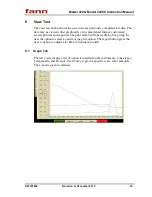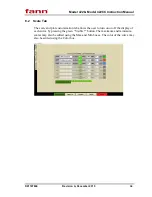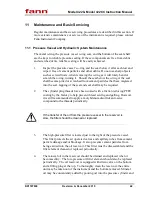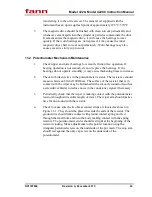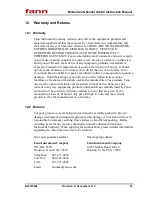
Model 422 & Model 422CC Instruction Manual
D01187869
Revision A, December 2015
45
3.
If so equipped, periodically disassembly the diaphragm hub and clean any
cement from the Teflon o-rings. Replace the o-rings if they are badly worn.
4.
Check the rubber diaphragm for signs of brittleness or cracking. Replace if
necessary.
5.
Check the point on the bottom of the paddle shaft. Replace it if it is worn to
the point that the paddle rubs on the bottom of the slurry cup. Check to see
that the paddle shaft is not excessively worn where the shaft extends
through the diaphragm hub. Replace if wear is excessive.
6.
Check the slurry cup seal plug for wear. Replace it if it is worn to the point
that the paddle rubs on the bottom of the slurry cup.
11.4 Replacing the Low Pressure Filter
To minimize the mess, place a bucket or cup under the filter
housing to catch any oil that might spill.
1.
Make certain the fill button is not active and that the unit is not trying to
pump oil. Instrument must be in stand-by with nothing active.
2.
Locate the automotive style low-pressure oil filter housing near the front
door of the instrument
3.
Unscrew the filter.
4.
Replace the filter element with a new element.
5.
Check for leaks.
11.5 Potentiometer Mechanism Resistor Replacement
1.
Remove shaft bearing retainer and potentiometer slider.
2.
Remove old resistor from mounting frame, being careful not to damage slot.
3.
Position new resistor over the slot in the mounting frame with the straight
side down. The connecting strip must be installed under the resistor in the
groove in the mounting frame. The length of resistor extending past the
connecting strip should be approximately even on both ends.



